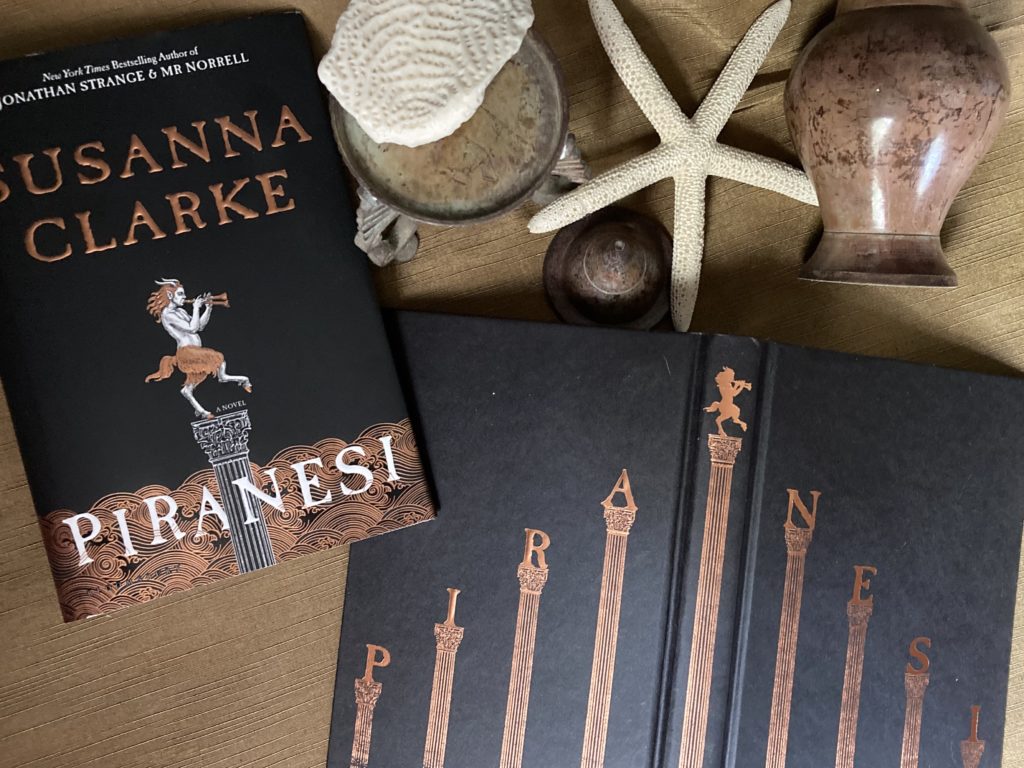
They were all enamoured with the idea of progress and believed that whatever was new must be superior to what was old. As if merit was a function of chronology! ~ Loc. 906
I read Piranesi a few months ago and I am still reeling from it — and excited to finally be able to talk to others about it. I read so much, and there are many books I’ve enjoyed, but I am rarely so amazed and excited by something truly impressive.
Told from the perspective of an unknown (until later) narrator, it opens with strange and unintelligible descriptions of archways, empty chambers, marble statues, and unending stairways — clearly a sensible map to the narrator. Even knowing (and trusting) the author, I admit I found these early pages difficult to follow. I finally gave up trying to draw a map in my own head and simply let the narrator lead me and I recommend every reader do the same.
Slowly, clues to the narrator’s labyrinthian world take form. Scraps of notes. Glimpses of dark figures. Visits from “The Other.” All the while, the narrator explores his endless home. He catches fish in nets from the ocean that fills the lower chambers everyday. He tries to trace the paths of the shadowy figure.
I had got halfway across the Hall when I noticed a scattering of white shapes lying on the Pavement. I picked them up. They were pieces of torn paper with writing on them. They were crumpled and so I smoothed them out and tried putting them together. … The writing was atrocious — like a tangle of seaweed. After some minutes of peering at it I thought I could make out the word ‘minotaur.’ … The First vestibule contains eight massive Statues of Minotaurs, each one different from the others. Perhaps the person who had written this had visited by own Halls? ~Loc. 626
The lack of summary — both here and elsewhere — may be frustrating, but the magic of this book is its slow reveal. To say anything more specific risks ruining the discovery for others. Susanna Clarke has successfully created a world both fantastical and mundane, and she remains consistent within her set of rules.
I will say that I loved the sly references to Narnia, the small winks to Cair Paravel. And once I finished the book, I looked up Giovanni Battista Piranesi, the trained architect and etching artist. Even so, I recommend readers go in knowing as little as possible.
I highly recommend this book for fans of Italo Calvino’s Invisible Cities, Coleridge’s “Kubla Khan,” Madeline Miller’s Circe, and Christopher Priest’s The Prestige. If you are ready for a bit of unusual adventure, read Piranesi.
My thanks to Marie and the team at Bloomsbury for the early copy.
Hardcover : 272 pages
ISBN-13 : 978-1635575637
Product Dimensions : 5.75 x 0.75 x 8.5 inches
Publisher : Bloomsbury Publishing (September 15, 2020)
